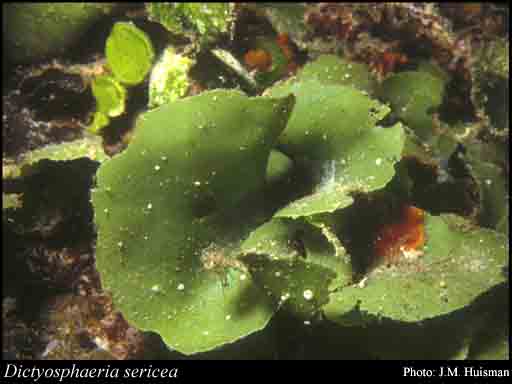- Reference
- Trans.Roy.Irish Acad. 565 (1855)
- Conservation Code
- Not threatened
- Naturalised Status
- Native to Western Australia
- Name Status
- Current

Scientific Description
Habit and structure. Thallus medium green, shallowly cupulate to irregularly lobed, single or grouped, 2–10 cm across and 1 cell thick, consisting of a thick, irregular margined membrane from a central (often broad), sessile attachment by coarse rhizoids, epilithic. Cells isodiametric, round to polygonal in surface view, (100–)150–250(–300) µm across in upper parts and 300–500(–1000) µm across near the base of the thallus, 400–600(–1500) µm thick, with small hapteroid lenticular cells forming rows joining the surface margins of the cells; new cells formed by segregative division, endogenous, with successive outer walls remaining for some time and later sloughed off; chloroplasts numerous, forming a reticulum, the larger ones with a pyrenoid.
Reproduction. Unknown.
Distribution. From Rottnest I., W. Aust., around southern Australia to Walkerville, Vic. and the north coast of Tas.
Habitat. Epilithic from low tide level to 23 m deep on rough-water to moderate coasts.
[After Womersley, Mar. Benthic Fl. Southern Australia I: 223-224 (1984)]
Distribution
- IBRA Regions
- Jarrah Forest, Swan Coastal Plain, Warren.
- IBRA Subregions
- Perth, Southern Jarrah Forest, Warren.
- IMCRA Regions
- Leeuwin-Naturaliste, WA South Coast.
- Local Government Areas (LGAs)
- Albany, Augusta Margaret River, Busselton, Cockburn, Esperance, Rockingham.